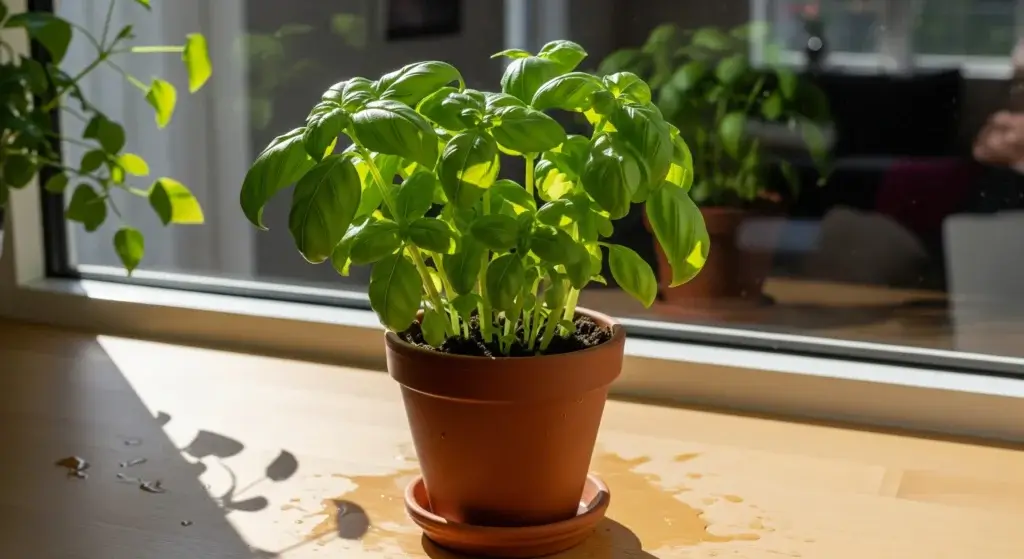
Strawberries are one of the most popular fruits to grow in home gardens, and with proper care, they can thrive even in colder climates.
Overwintering strawberries is a simple process that requires some preparation and attention to detail.
In this article, we will guide you through the steps to overwinter strawberries, ensuring a bountiful harvest in the spring.
The Benefits of Overwintering Strawberries in Colder Climates
Overwintering strawberries in colder climates can be highly beneficial for both your plants and your harvest.
Here’s a detailed look at why:
Increased yield
Protecting your strawberry plants from harsh winter weather helps them retain energy and nutrients.
This means they can start the growing season strong, producing more flowers and ultimately more berries.
By overwintering, you give your plants a head start, leading to a potentially higher yield of juicy strawberries in the spring.
- Read also: Extend Your Harvest: Tips for Growing Broccoli in Winter
- Read also: Keeping Your Garden Green: Privet Hedges Care Tips in Winter
Improved flavor
Strawberries that have been through the winter tend to develop a sweeter and more intense flavor.
The stress caused by colder temperatures prompts the plants to concentrate sugars in their fruits, enhancing their taste.
Many gardeners find that overwintered strawberries have a richer flavor that makes them a delightful treat straight from the garden.
Reduced maintenance
Overwintering strawberries simplifies your gardening tasks during the colder months.
Unlike in warmer seasons, these plants require minimal attention once they’re properly protected.
You won’t need to water them as frequently since they are dormant and not actively growing.
Similarly, fertilization needs are reduced, as the plants aren’t actively taking up nutrients.
This reduction in maintenance not only saves you time but also conserves resources like water and fertilizer.

Step-by-Step Guide
Overwintering strawberries ensures they survive the cold months and thrive come spring.
Here’s a detailed guide on how to prepare and protect your strawberry plants:
Step 1: Prepare the bed (late fall)
Clear the bed
Begin by clearing out any debris, weeds, or dead plants from the strawberry bed.
This cleanup is crucial to prevent diseases from lingering and affecting new growth.
Think of it as tidying up your garden to give your strawberries a fresh start.
Add organic matter
Next, enrich the soil by adding a layer of organic matter such as compost or well-rotted manure.
Organic matter improves the soil’s structure and fertility, providing essential nutrients for your plants.
Imagine it as giving your strawberries a nutritious meal to help them grow strong and produce plenty of sweet berries.
Step 2: Prune for winter (late fall)
Remove dead or damaged leaves
Inspect your strawberry plants and carefully remove any leaves that are dead or damaged.
This helps prevent diseases from taking hold and spreading.
Think of it as tidying up your plants to keep them in top shape during their dormant period.
Cut back crowded plants
Identify any strawberry plants that have become crowded or overgrown.
Trim them back by cutting away excess foliage.
This allows better air circulation around the plants, which reduces the risk of fungal diseases.
Imagine it as giving your plants some breathing room to stay healthy through the colder months.

Step 3: Apply winter mulch (before ground freeze)
Choose the right mulch
Select a breathable mulch like straw or bark chips.
These materials allow air to circulate around the plants while insulating them from extreme cold.
Avoid using plastic or synthetic mulches, as they can trap moisture and lead to rotting of plant roots.
Think of mulch as a cozy blanket that keeps your plants warm and protected during the winter.
Apply the mulch
Spread a 2-3 inch layer of mulch evenly around the base of the strawberry plants, covering the entire bed.
Ensure the crowns of the plants are covered but not buried, as this can cause them to rot.
Imagine it as tucking your plants in for the winter, providing insulation against freezing temperatures and maintaining soil moisture.
Step 4: Extra protection in colder climates (optional)
Use a cold frame
Consider using a cold frame if you live in an area with extremely cold winters.
A cold frame is like a miniature greenhouse that covers your plants, trapping heat and creating a warmer microclimate.
It shields the plants from harsh winds and freezing temperatures, helping them stay healthy and protected.
Use row covers
If you don’t have a cold frame, you can still offer protection with row covers.
These lightweight fabrics are breathable, allowing air and sunlight to reach the plants while providing a barrier against cold weather.
Secure row covers over the strawberry plants to keep them insulated and shielded from frost
Step 5: Special care for potted strawberries
Bring potted plants indoors
Before the first frost hits, bring your potted strawberry plants indoors.
This protects them from freezing temperatures and harsh winter conditions that can damage or kill the plants.
Choose a bright location with cool temperatures, such as a garage or a room with good sunlight.
Minimal watering
During winter, reduce watering for your potted strawberries.
They enter a dormant phase and don’t need as much moisture as they do during active growth periods.
Water sparingly to keep the soil lightly moist, ensuring it doesn’t dry out completely but avoiding overwatering which can lead to root rot.

- Read also: A Comprehensive Guide: Tips on How to grow Lemon balm
- Read also: Nurturing Your Orchard: Natural Pesticides for Fruit Trees
Conclusion
Overwintering strawberries is a simple process that requires some preparation and attention to detail.
By following these steps, you can ensure a bountiful harvest in the spring and enjoy the benefits of overwintered strawberries.
Remember to prepare the bed, prune for winter, apply winter mulch, and provide extra protection in colder climates.
With proper care, your strawberry plants will thrive and provide you with a delicious and nutritious harvest for years to come.



